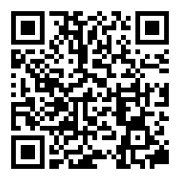Credit: Getty
Strong Women
Non-exercise activity thermogenesis: why moving more every day is so important for health
By Chloe Gray
4 years ago
You optimise your workout plan, but did you know that your non-exercise activity could be more important than what you do at the gym?
You put a lot of time into thinking about what you do in the gym to support your body. You’ve fine tuned your programme to make the most out of your run or lifting session, and you spend time foam rolling or cooking nutritious meals to support your training. Yet, how much consideration do you put into how you move across the rest of the day?
If you’re training for an hour or so a few times a week, that’s only around 3% of your time spent working out. It’s amazing that such a small amount is enough to make you noticeably stronger and fitter. Yet it begs the question: what are you doing for the other 97% of your week? If the answer is sitting down at your desk, you might want to have a think about increasing your non-exercise activity thermogenesis (NEAT) activity. It sounds confusingly scientific, but increasing your NEAT is actually pretty straight forward – and can have huge benefits.
You may also like
How to move more during the day
What is NEAT?
“Your total energy expenditure can be broken down into three components: basal metabolic rate (BMR) [the energy your body requires for basic biological function], the thermic effect of food (TEF) [how much energy it takes your body to digest food] and the energy expended for physical activity,” explains sport and exercise medic Dr Amal Hassan.
“Physical activity is the second most significant contributor to your total energy expenditure, after your basal metabolic rate and can be categorised as being either exercise-related (EAT) or non-exercise related (NEAT). Both vary greatly between populations and between individuals.”
Credit: Unsplash
Non-exercise activity refers to any form of movement that isn’t a structured workout, such as walking to the shop, standing up and down at your desk, gardening and fidgeting.
“Studies suggest NEAT is responsible for 6-10% of total energy expenditure in individuals with a mainly sedentary lifestyle, but this can increase to a huge 50% or more in highly active (but not exercising) subjects,” Dr Amal says.
Why does NEAT matter?
So if you do more NEAT activity, you’ll increase your energy expenditure. Why does that actually matter? “For those of us not suffering the acute barriers of ill-health, there’s an argument that strongly suggests we increase non-exercise physical activities. We know from longitudinal physical activity data that simply going from a sedentary lifestyle to a less sedentary lifestyle has the greatest impact on markers of long-term good health – more so than increasing the intensity at which you exercise.”
Essentially, that means we can’t out train a sedentary lifestyle. If your job encourages you to sit for most of the day, you should be putting as much planning into your daily movement as you do your gym sessions. This really isn’t about burning off extra calories by walking more, but reducing time sat down “purely for the fact that this is associated with a greater risk reduction of chronic diseases such as type 2 diabetes, heart disease and dementia.”
How to improve your NEAT?
There are three key ways to increase your NEAT, according to Dr Hassan. These are posture (how long you spend in one position), ambulation (standing and walking around) and spontaneous movements. “Variety is key: switch-up your sitting positions frequently, getting up and walking around more, investing in a standing desk, going for midday walks, changing how you commute and incorporating low intensity exercise into your week,” says Dr Hassan.
“If you are able to make changes in your workplace, do it; systematic change and the positive engineering of our environments to facilitate movement and activity for health is also important.”
While these activities – such as adding in an extra walk around the block or standing up every half an hour – aren’t intense, they can have a huge impact on your body. “Remember that this will likely have a noticeable impact on your daily energy requirements and recovery needs, particularly if you exercise regularly on top, so avoid going from 0-100 in a short period. Consider tweaking your training intensity, increasing your energy intake and getting more sleep to ensure balance,” says Dr Hassan.
Images: Getty / Unsplash
undefined
By signing up you agree to occasionally receive offers and promotions from Stylist. Newsletters may contain online ads and content funded by carefully selected partners. Don’t worry, we’ll never share or sell your data. You can opt-out at any time. For more information read Stylist’s Privacy Policy
Thank you!
You’re now subscribed to all our newsletters. You can manage your subscriptions at any time from an email or from a MyStylist account.

